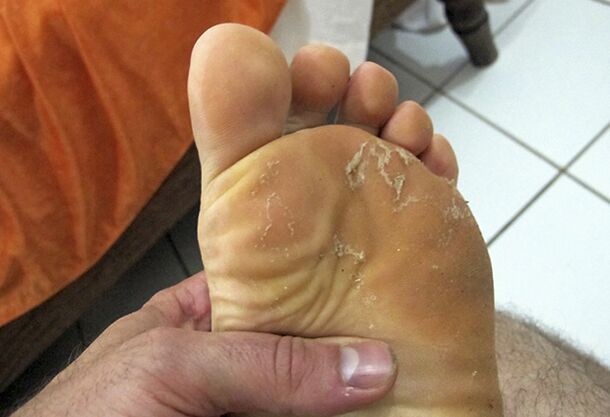
Feat mushrooms are a common disease that develops a dermatomicosis group and due to the activation of pathogenic microorganisms.
The subsidiaries of the micosons live in the body of plants and soils, in the body, and the life of infected shoes or clothing, so everyone can be infected with a fungal infection.
What is the mikosis of the foot?
Foot mushrooms are a disease of pathogenic microscopic fungi, a lesion of interdigital gaps with further spread of infection in the healthy regions of the body.
This pathology can indicate itself at any age, But especially illness is diagnosed with people with older people and weakened immunity.
About 50 types of fungi in nature are potential danger.Under the influence of favorable conditions, all is parasitic in the human body and inside the human body, which lead to the development of the system and local mushroom pathologies.
Important!
When the feet mushroom lesion is not available in the skin of the skin and in a timely treatment, the nail plate causes the nail plate.
MKB code 10
According to ICD-10, the Mikoz Stop code has a code in B35.3.
Types of skin fungal diseases
Experts distinguish several main types of foot micoses depending on the pathogen.Each range has its own characteristicsAnd comes with a number of unpleasant symptoms.
Rubrofitius
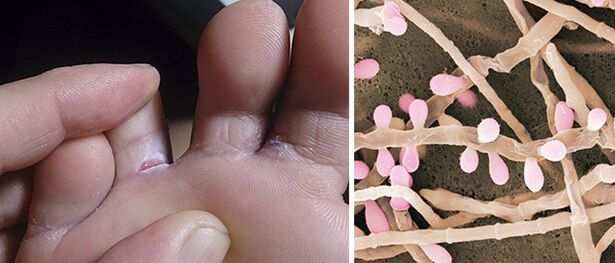
Is the reassured agentTrichofyte Mushroom Mushrooms.The clinical picture of the pathology begins its legs and layers between the fingers of the disease, but in the process is an infection through the body through lymphematogenic spreads of foreign protein structures.
STOPULDISISIS
Develops because of penetrating the human bodyThe heart of the sex.Stop's CANDERIIASS begins with intersigital space and a lesion of nails.Meanwhile, the area of nail rollers is hyperemic and edematosis and can be worried with peans in the patient damage zone and severe itching.
Onyokomycosis
Dermatofites, damage to nail plates caused by fungiCandidate or moldings.Mushrooms are unpretentious and characterized by high life resistance, so it is difficult to treat with a developed form.
Fentral (interdigital) form
The most typical form of micoses, which is determined by damage to intersigital folds without symptoms of the pathological process on the foot.As the patient develops, cracks, peeling, eritema and consultation appear.In the future, any bacterial infection can develop in the background of the disease.
SQUYAMINE -HYPERKERKERATOTIC FORM
Are characterized by damage at both feet at the same time.The disease comes with severe peeling and keratinating, near deep cracks in effective areas, the skin of the skin.Itching is insignificant or not.
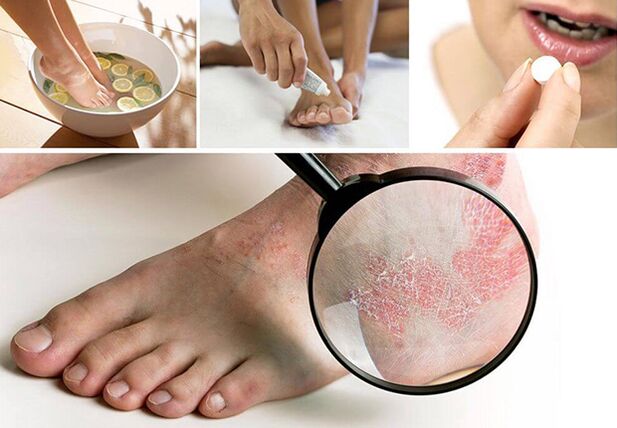
A dusitrotic form
Once the infection penetrates the body, many bubbles with a rough surface appear in the skin and swelling in the patient, which creates a diseases of the disease similar to the disease.Bubbles form erosion zones after tornIn the rise of heel or foot.
Erasure form
There are minimal clinical manifestations in the form of microcrast inappropriate in the intersigital layers of different micoses, leather and shelled peel.The patient does not live, so the treatment of pathology is postponed for a long time.
Mador
Long-time, mostly deep micoses that affect the legs.The disease begins with focal inflammation inside subcutaneous tissues and gradually spreads soft tissues, internal organs and bones.
At the initial stage does not show pathology, but then a stamp with the contents of the nurtured, a certain smell occurs at the foot of the infected.The surface of the skin is broken and looks like turtles.
Stages of Stop Mikos
Stop Mikosun's Incubation Period is 3-14 days, after which the infected human infection explains the first signs of the infection.Dermatologists pay attention to patients with several patients.
Primary
Patient may not be suspected of infection initiallyMikosun stage is regarded as ordinary dry skin.Cracks and redness appear in the foot.There is light swollen and itching.
Middle
In the middle stage is determined without difficulty with mushrooms, because large pink spots are seen in the skin, the peeling area increases and itching increases.
Light-hearted
Mushrooms affect both communication sites and nail plates to the feet.Nails become fragile and brittle, start to collapse and sow.The skin is covered with coarse, squeezed, deep cracks and separated by large sheets.
Reasons and symptoms of mungal damage
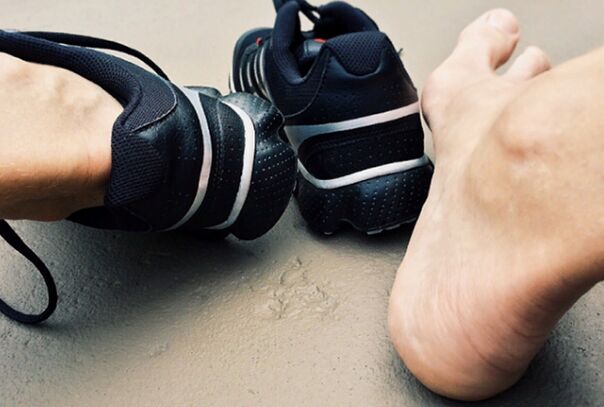
If a person is completely healthy, personal items or household items may not occur after direct contact with the source or carrier of the infection.However, when there is any disorder in the body, there is a risk of infection.
They become provocative factors:
- weakening of protective functions;
- increased sweating or dry skin;
- long-term treatment;
- inconsistency with hygiene rules;
- blood circulation violation;
- Having micdamines on the skin;
- Weight excess weight;
- foot deformation;
- To wear tight shoes.
Depending on the localization of inflammation and the image of the disease, the fungal infection can be accompanied by the following symptoms:
- Light or severe redness of the skin in the lesion;
- Itching and burning;
- skin peeling;
- To change the color of nails;
- appearance of small cracks;
- Loading and thickening of legs;
- Bubble rashes;
- Unpleasant odor.
Diagnosis
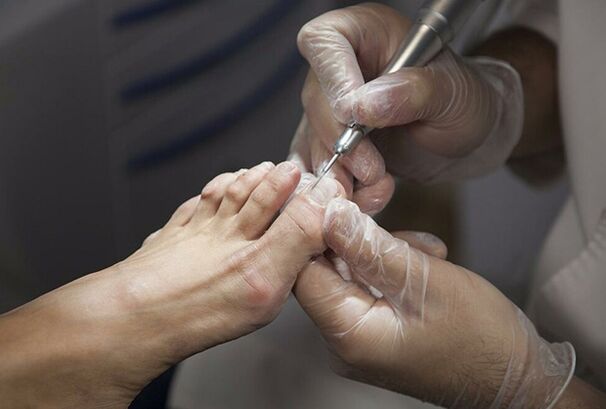
The diagnosis of the footing of the feet is carried out by a micologist and a dermatologist, which should be contacted immediately after the appearance of one or more pathological signs.
The specialist will be able to determine the existence of an infection during the initial inspection, but it will not be possible to establish a pathogenic type without additional laboratory tests.
Determination of the type of fungi is used:
- General and biochemical blood testing;
- collapse from the affected area of the skin;
- Planted outfit collected for a nutritious environment;
- Skin biopsy;
- A special test to confirm the existence of infection in the body.
Based on the results obtainedThe doctor prescribes diagnosis and treatmentMikos is aimed at eliminating mushroom infection and symptomatic manifestations.
Total principles for the treatment of foot and fingers (small finger)
Mikoz's treatment is carried out using effective drugs that can be prescribed by a doctor, especially.Often the patient is assigned:
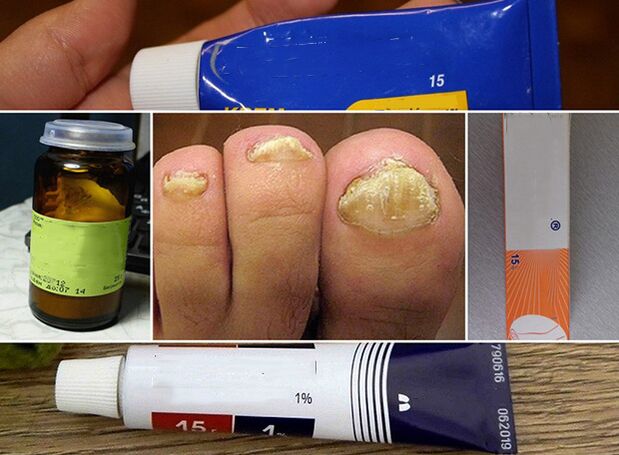
- Antifungal agents for internal and external use;
- Antimototic;
- corticosteroids;
- antihistamines;
- Polivitamin complexes.
Important!
At the initial stage of the disease, treatment can be carried out using alternative medical recipes.Many of them help to get rid of the problem quickly, but in some cases they can react to allergic.
How dangerous is it for the sole mikos?
If the patient refuses to treat or ignore the symptoms of the disease after being diagnosed, the situation will worsen over time and symptoms will be more pronounced.BesidesLack of treatment threatens the formation of complications.Among them:
- spreading infection into large areas of skin;
- the development of the sensitivity of the body;
- annexation of secondary infection;
- Complication of related diseases.
Important!
Continuous physical and aesthetic concerns can cause psychological problems.
Can the mikosis of the foot switch to other parts of the body?
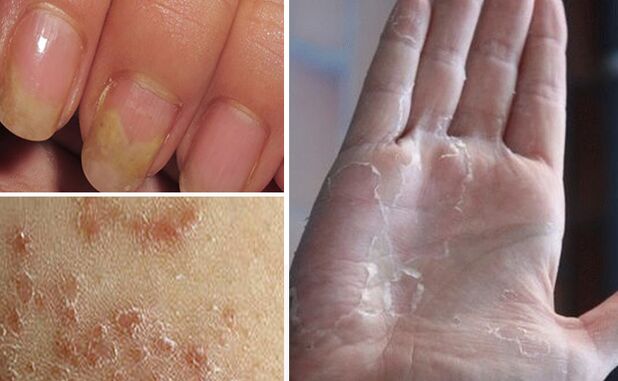
Cork diseases do not pose a certain threat to human life, but the infection caused the appearance of a large focus of damage to other damage can be spread to other parts of the body.
The patient can see the patient's characteristic symptomatic manifestations, in later stages of the pathological process, when in the skinThe round rash of a pink shade is noticeableOr blisters with transparent content.
Prevention of the disease
To prevent an infection with Mikoz, it is not enough to exclude any connection with the possible sources of tapping infection.In addition, the carriers and personal belongings of the disease should be at least communicating and preventive measures:
- Conformity to personal hygiene;
- treatment of chronic diseases;
- maintain a healthy lifestyle;
- To strengthen immunity.
Foot mushrooms are not only for an infected person but also a threat to its nearby environment, so you need to find the first signs of MikosTake all possible measures to leavefrom the disease.
It is important to contact a dermatologist in a timely manner for diagnostic measures to prevent complications and determine the correct treatment using medication.

























